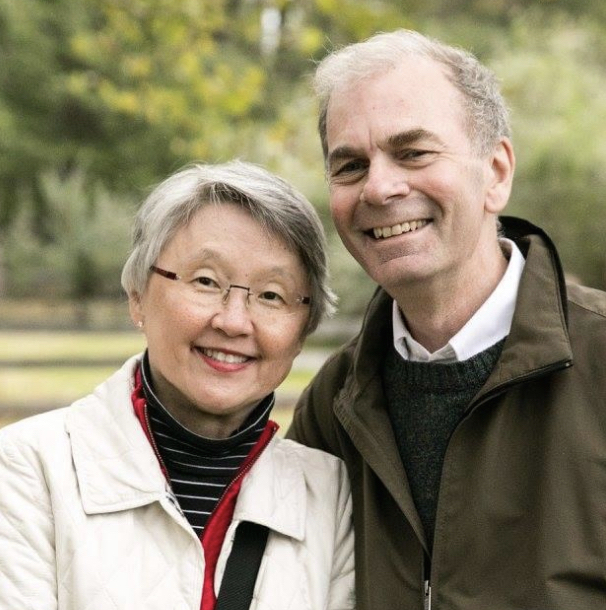Consumer Involvement
PRMRP Consumer Peer Reviewer




Joan Block, R.N., B.S.N.
Executive Director and Co-Founder, Hepatitis B Foundation
and husband, Tim
Turning 30 years old was a blissful moment in my life. My husband and I had bought our first home (that literally had a white picket fence) and we were expecting our first child. I was so happy and excited about the future as a new wife, mother, and professional nurse. My idyllic world, however, came crashing down the day the employee health doctor asked to meet with me.
The doctor said that I had hepatitis B. I was devastated. My knees gave out. Tears flowed. At that time, in the late 1980s, hepatitis B patients were treated like lepers, kept in isolation rooms. The only hepatitis B patients I knew were dying of cirrhosis or liver cancer. It was awful. They died painful deaths.
My diagnosis felt like a death sentence. I was terrified. Back then there was no internet, no support groups, and no treatments. There was nowhere to turn for information or support. It was a lonely, scary time.
To make matters worse, I was suspended from my job because the hospital didn't know how to handle my hepatitis B. Instead of working, I shuttled between doctors, undergoing physical exams, blood tests, and liver scans. It was a frightening world - even for a nurse.
Throughout the years, I have experienced a lot of shame since most people assume hepatitis B is caused by poor life choices such as illicit drug use or promiscuous sex. Neither was true for me. As a result, I didn't share my diagnosis with others for fear of rejection or discrimination. Since I was born in South Korea and adopted by an American family, I most likely acquired a perinatal hepatitis B infection, which is the most common route of transmission outside the U.S. That is, my doctors believe my birth mother probably unknowingly transmitted the hepatitis B virus to me at the time of delivery.
In addition to the burden of undergoing medical monitoring every 6 months and not being able to openly talk about having hepatitis B, is the ever-present fear of developing liver cancer - the second deadliest cancer in the U.S. Meaning, there is a less than 10%-15% chance of surviving liver cancer after 5 years.
More than 30 years have passed since my hepatitis B diagnosis, but I will never forget what I felt and experienced. In fact, my husband and I started the Hepatitis B Foundation in 1991, the first nonprofit organization dedicated to finding a cure and providing information and support to those affected, to make sure no one would have to suffer alone. My husband is a scientific researcher and I'm a nurse, so together (and with many friends and volunteers) we were able to create programs that could focus on accelerating cure research, patient education and outreach, and disease advocacy.
In 2017 I stepped down as founding executive director of the foundation, and I am proud to have seen it grow from a kitchen grassroots effort into a national organization with a global reach. With each story shared these past decades, including my own, the foundation is decreasing stigma and bringing hope to the more than 300 million people worldwide living with chronic hepatitis B.
Currently, I'm living a full, healthy life due to the advances in science and medicine. There are now drugs to control chronic hepatitis B, with more in the pipeline; improved technology for the early detection of liver cancer when intervention is most beneficial; and educated healthcare providers to better manage and treat this serious liver disease.
None of these advances, however, would be possible without programs like the Department of Defense Congressionally Directed Medical Research Programs. Hepatitis B has been offered as a Topic Area by the Peer Reviewed Medical Research Program (PRMRP) in Fiscal Years 2015-2021. Excitingly, it is being offered again as a Topic Area in Fiscal Year 2022. I am proud to have been nominated by the Hepatitis B Foundation to serve as a reviewer for the PRMRP. Through this program, patients like me can live with the hope that there will continue to be life-saving diagnostics, vaccines, treatments, and even cures in the future.
Last updated Monday, March 10, 2025














